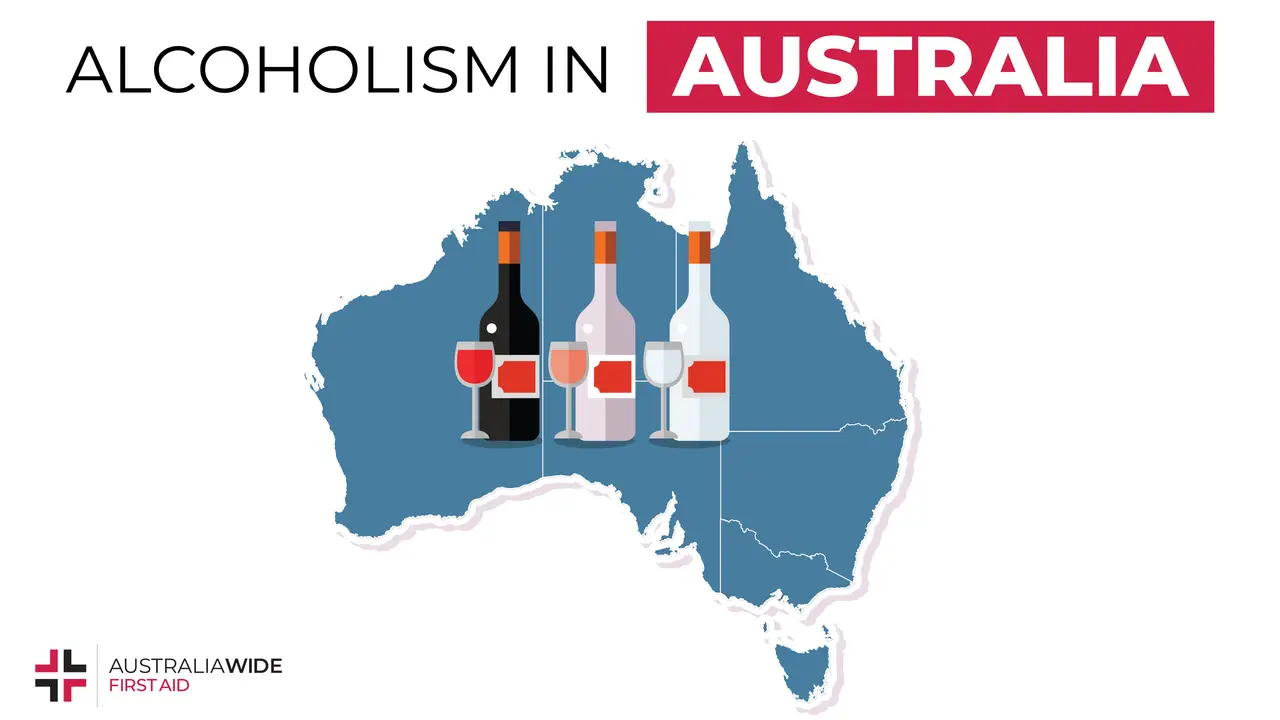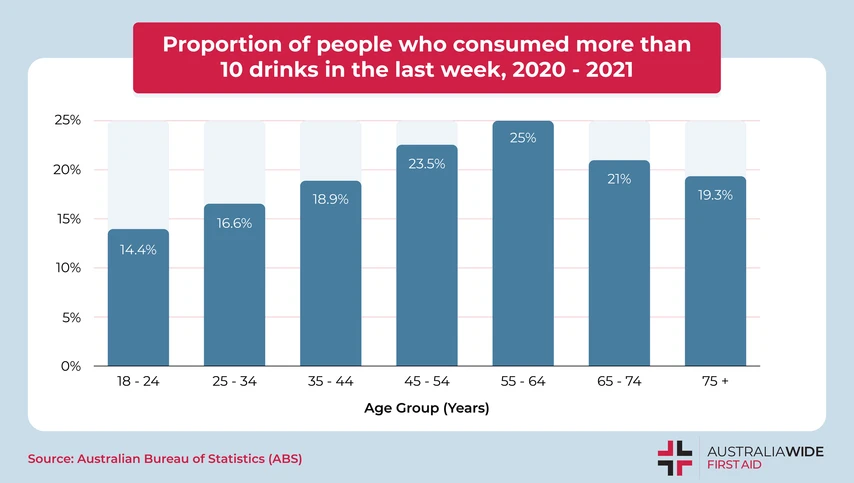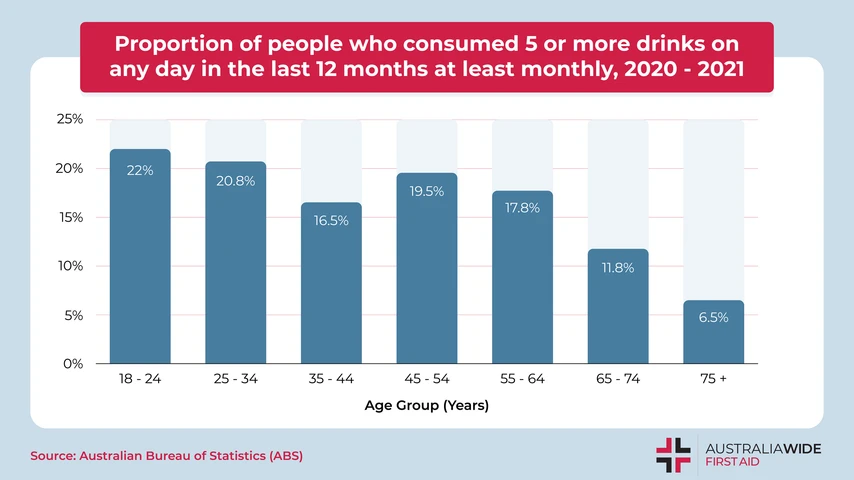Alcoholism in Australia


Alcoholism is the colloquial term for alcohol use disorder (AUD).
AUD is a medical condition in which a person is unable to control their consumption of alcohol, even when it is negatively affecting their work, health, and relationships.
According to the Australian Institute of Health and Welfare (AIHW), the consumption of alcohol is widespread throughout Australia, as alcohol is an automatic feature of our cultural and social activities.
As such, AUD is a major health concern in Australia, as it can increase a person’s risk of numerous chronic conditions, including liver disease, heart problems, and some cancers.
Today, we are going to take a closer look at the statistics on AUD in Australia, and what these figures represent about our social and cultural norms.
The Australian alcohol guidelines are developed by the National Health and Medical Research Council (NHMRC), Australia’s main statutory authority for health and medical research.
These guidelines outline how much alcohol Australians should consume to safeguard their wellbeing and reduce their risk of alcohol-related harm.
To this end, the Australian alcohol guidelines recommend that:
These guidelines also stipulate that a standard drink is any drink comprising 10 grams of pure alcohol.

The below statistics were sourced from the Australian Bureau of Statistics (ABS) for the National Health Survey (NHS) 2020-2021, which was collected online and should only be used for point-in-time analysis:
It is important to note, the NHS considers a person to drink in excess of the Australian alcohol guidelines if they: consumed more than 10 drinks in the last week; and/or, consumed 5 or more drinks on any day at least monthly in the last 12 months (i.e., 12 occasions per year).
According to ReachOut Australia, an online mental health service for young people and their parents, binge drinking occurs when a man consumes more than six standard drinks in one sitting, and when a woman consumes more than four standard drinks in one sitting.
As such, people aged 18 – 24 years were three times more likely to engage in binge drinking, compared to their counterparts aged 75 years and over.

Almost one-fifth (19.9%) people aged 18 years and over consumed more than 10 standard drinks in the week prior to interview. Of this cohort:
One in six (17.2%) people aged 18 years and over participated in binge drinking (i.e., consumed five or more standard drinks on a single day) at least once a month in the last year. Of this cohort, men were twice as likely to have exceeded 5 standard drinks at least monthly, compared to women (23.5% compared to 11.3%).
Per the AIHW’s page on Alcohol, tobacco & other drugs in Australia, the percentage of Australians who exceed the Australian alcohol guidelines has generally decreased over recent years.
According to AIHW, the National Health Survey (NHS) reported that in 2017-18, there was a 3.4% decrease in the number of adults aged 18 and over who exceeded the lifetime risk guideline, compared to 2011-12.
However, according to AIHW, the 2019 National Drug Strategy Household Survey (NDSHS) found that there was an increased prevalence of people exceeding the single occasion risk guideline (i.e., binge drinking) among the 50 – 59 and 70 and over age categories.
This finding was backed up by an article from The Guardian, which reported that Australians spent more time drunk in 2020 than any other nation. That is, although Australians drank in line with the global weekly average, they drank to the point of drunkenness an average of 27 times a year. This is almost double the global average of 15.
According to ReachOut Australia, many people binge drink at social events to overcome feelings of anxiousness and isolation. They also binge drink out of a misguided belief that people need to drink excessively to have a good time, and to make their peers happy. Many people also do not realise when they are binge drinking, as they drink too quickly to feel the sedative effects of alcohol until it is too late.
In the short term, binge drinking can cause people to behave differently and open themselves up to injury, such as start fights, fall down, or have a car accident. Meanwhile, in the long term, binge drinking can contribute to mental health problems, physical health effects, and a dependence on alcohol.
As such, if you drink to excess every time you are at a social event, it might be worthwhile to seek advice from a healthcare professional or support group. A list of suggested support options can be found on Australia's Department of Health website.

February 10, 2023
Home to some of the world's most dangerous shark species, Australia is one of the deadliest countries when it comes to human/shark incidents. In this article, we explore the number and outcome of shark/human incidents that occurred in Australia in 2022, to date.

December 20, 2022
Five diseases accounted for more than one-third of all deaths registered in Australia in 2021. And though our overall mortality rate remains low, Dementia is narrowing the gap to become one of Australia's deadliest diseases.

October 24, 2022
Health statistics are an invaluable tool for measuring the health of Australians and targeting prevention and treatment resources accordingly. In this article, we compare Australia's mortality rating from 2019 to 2020.